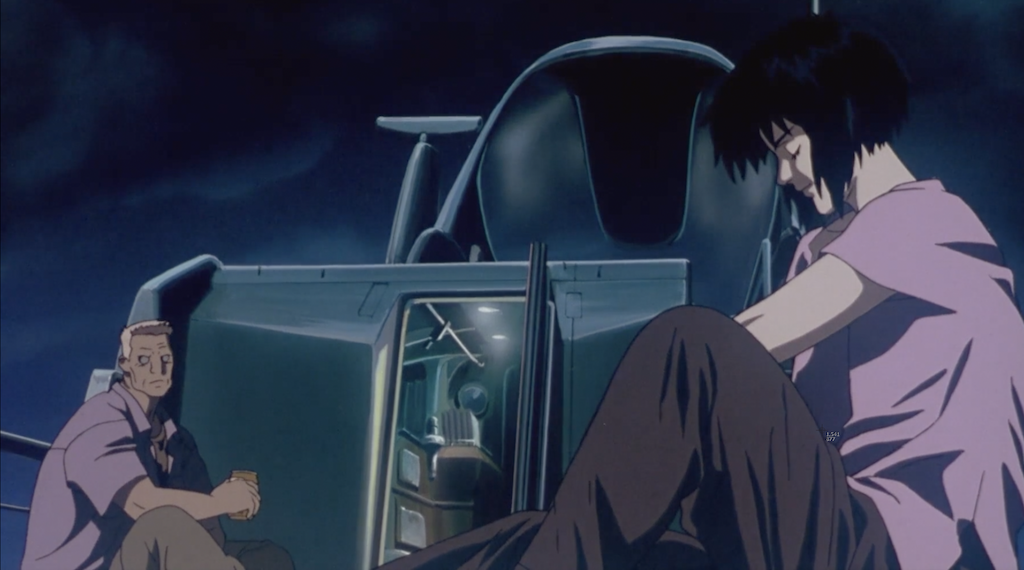
When Radiohead's Kid A was released, my friends and I were already huge Radiohead fans, and it was a quick little contemporary masterpiece of an album we embraced. This same group of friends had a habit of watching favorite movies "synced" to favorite albums, pairing things by shared mood or motifs. One day Kid A and Ghost in the Shell got played together. It was the most synchonous pairing we ever did. 15 years later I created this website to highlight the uniquely beutiful interplay between this seminal album and (the first part of) this influential landmark of a movie. This interplay takes the form of shared themes, lyrical symbolism, timbre matching visual tone, and even some closely matched scene transitions and synced cuts. The fact that the title song and movie title card come together exactly is certainly quite a coincidence.
It is not this site's argument that Radiohead intentionally set out to make, or even mix, their album to Ghost in the Shell. Rather, the goal is to highlight the many ways in which these two philosophical, millenial, near-future-looking, spacey, epics pair well together, and the beutiful and thought provoking coinencidences that occur when you consider them together. Cheesemakers and winemakers don't have to work together for some of their produce to occasionally pair exceptionally well together.
What follows is an inventory of synchronous moments for your consideration.






Images from the film Ghost in the Shell used under fair use. Concept, captions and site code ©Imaginary Cartography.